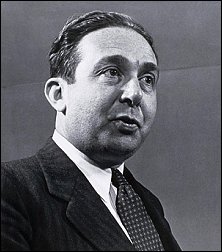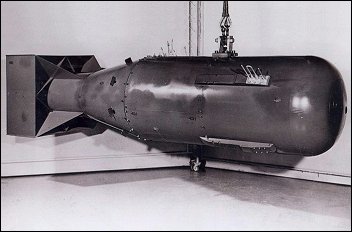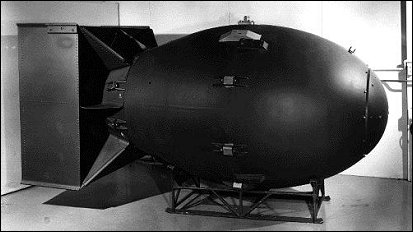| General Chemistry is a free introductory textbook on chemistry. See the editorial for more information.... |

|

Home  Nuclear Chemistry Nuclear Chemistry  Nuclear Fission Nuclear Fission |
|||||||||
| See also: Nuclear Fusion, Nuclear Energy | |||||||||






|
|||||||||
Nuclear FissionAuthor: Andrew R. Barron
While the liberation of large amounts of energy was found to result from the splitting of the atom as a consequence of the mass defect, it is another observation that is the key to the successful harnessing of nuclear fission. It should be noted from Equation 3 and Equation 4 that in addition to the splitting of the uranium-235 by a single neutron and the formation of two new atoms, there is also formed additional neutrons. Clearly if these have sufficient energy they can continue and react with another uranium-235 atom. Thus, the reaction of a single uranium-235 atom with a single neutron can generate three additional neutrons. Each of these three neutrons can react with three uranium-235 atoms, from each of which will come a total of nine neutrons. It is this process whereby more neutrons are generated than used in the original reaction that is the basis of a chain reaction.
Despite the view of a chain reaction in the figure above, there needs to be a minimum amount of mass to ensure that each neutron is absorbed and hence allow for the chain reaction to continue. This is known as the critical mass, which is defined as the smallest amount of fissile material needed for a sustained nuclear chain reaction. Once the idea of uranium fission was reported several people started to think about the atomic bomb proposed by H. G. Wells. Hungarian physicist Leó Szilárd had filed for a patent on the concept of nuclear fission, but his attempt to create a chain reaction using beryllium and indium, was unsuccessful. In 1936, he assigned the chain-reaction patent to the British Admiralty to ensure its secrecy (GB Patent 630726). Szilárd was also the co-holder, with Enrico Fermi, of the patent on the nuclear reactor, and possibly most importantly he drafted a confidential letter to the US President Franklin D. Roosevelt explaining the possibility of nuclear weapons. In order to receive the weight the letter deserved, Szilárd persuaded his friend Albert Einstein to sign the letter. It was this letter that initiated the Manhattan project that led to the creation of the first atomic bombs.
Roosevelt signed the executive order to start the Manhattan project on a Saturday before listening to a baseball game on the radio. If he had waited until Monday the order may have been forgotten since the day he signed the order was 6th December, 1941, and that Sunday was the day of the attack on Pearl Harbor by the Japanese that brought the US into World War II. The Manhattan Project resulted in the manufacture of two atomic bombs after a test of a plutonium-239 device at Trinity Site, New Mexico, on July 16, 1945. Little Boy was made from uranium-235, and was used on Hiroshima on 6th August 1945, and Fat Man that was dropped on Nagasaki on 9th August 1945, were made primarily of plutonium-239. The physical effect of these bombs was dramatic. Temperatures of over 3000 °C were observed over 2 miles from ground zero. To put this into perspective, the boiling point of iron is 2750 °C, while the boiling point of the sand in concrete is 2350 °C.
|
|||||||||
Home  Nuclear Chemistry Nuclear Chemistry  Nuclear Fission Nuclear Fission |
|||||||||
Last Update: 2011-02-16





